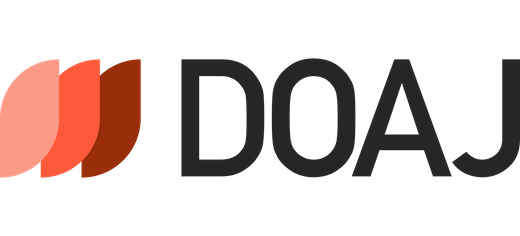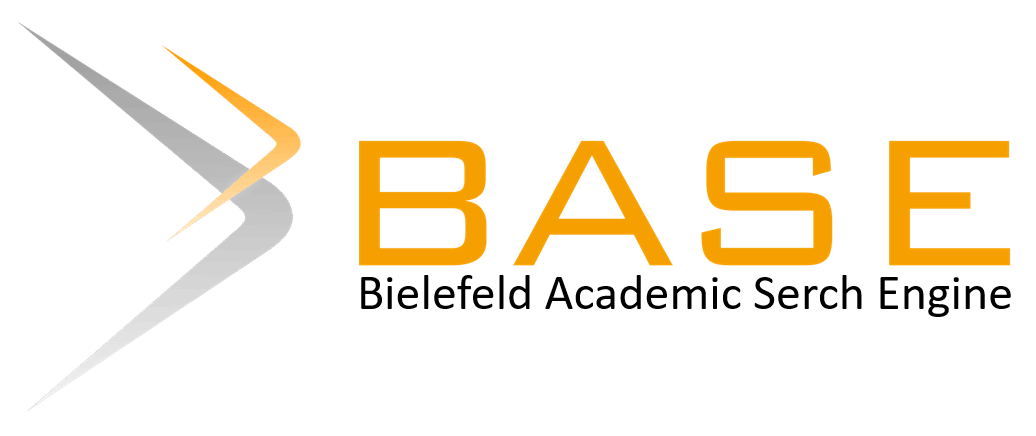The profile of pre-service biology teacher students' ability to design digital learning media and its correlation with creative thinking skills
Abstract
In the era of technological advancement, integrating innovative learning models is crucial to developing skills for the twenty-first century. This study explores how project-based learning (PjBL) is applied in a Digital Biology course and its contribution to fostering student creativity. The research involved 36 biology education students at Universitas Pendidikan Indonesia, using a quantitative descriptive approach. Data were gathered through assessments of student-created digital projects such as Instagram carousels, digital modules, interactive worksheets, and a creative thinking questionnaire. The creative thinking indicators based on Guilford (fluency, flexibility, originality, and elaboration) were used to evaluate student performance. The results showed that 31 out of 36 students (81.58%) achieved a "Creative" level (Level 3), indicating that PjBL effectively stimulated creative thinking in digital contexts. Descriptive statistics revealed that project task scores were high, with strong positive correlations between flexibility (r = 0.68), fluency (r = 0.61), and originality (r = 0.61) with the final scores. This study highlights the importance of integrating PjBL with digital pedagogy to design creative competencies in pre-service biology teacher students and suggests further strategies to promote elaborative thinking. The research provides empirical evidence that multi-format digital projects can effectively stimulate creativity in teacher education.
Keywords
Full Text:
PDFReferences
Aini, A. N., Mukhlis, M., Annizar, A. M., Jakaria, M. H. D., & Septiadi, D. D. (2020). Creative thinking level of visual-spatial students on geometry hots problems. Journal of Physics: Conference Series, 1465(1). https://doi.org/10.1088/1742-6596/1465/1/012054
Anggraini, E., & Zulkardi, Z. (2020). Kemampuan berpikir kreatif siswa dalam mem-posting masalah menggunakan pendekatan pendidikan matematika realistik indonesia. Jurnal Elemen, 6(2), 167–182. https://doi.org/10.29408/jel.v6i2.1857
Apriansyah, A., Haifaturrahmah, N. S., Nizaar, M., & Alaa, S. (2024). Project based learning model on elementary school students’ science process skills and creative thinking skills. Jurnal Ilmiah Sekolah Dasar, 8(1), 120–128. https://doi.org/10.23887/jisd.v8i1.64273
Biazus, M. de O., & Mahtari, S. (2022). The impact of project-based learning (PjBL) model on secondary students’ creative thinking skills. International Journal of Essential Competencies in Education, 1(1), 38–48. https://doi.org/10.36312/ijece.v1i1.752
Chen, S.-Y., Lai, C.-F., Lai, Y.-H., & Su, Y.-S. (2019). Effect of project-based learning on development of students’ creative thinking. International Journal of Electrical Engineering & Education, 59(3). https://doi.org/10.1177/0020720919846808
Creswell, J. W., & Creswell, J. D. (2021). Research design: qualitative, quantitative, and mixed methods approaches. Sage publications.
Dinther, M.V., Dochy F., Segers M. (2011). Factors affecting students’ self-efficacy in higher education. Educational Research Review, 6(2), Pages 95-108. https://doi.org/10.1016/j.edurev.2010.10.003
Dogan, S., Dogan N.A., & Celik I. (2020). Teachers’ skills to integrate technology in education: Two path models explaining instructional and application software use. Education and Information Technology 26, 1311–1332. https://doi.org/10.1007/s10639-020-10310-4
Evans, J. D. (1996). Straightforward statistics for the behavioral sciences. Brooks/ Cole Publishing, Pacific Grove.
Fadhil M., Kasli E., Halim A., Evendi, Mursal, dan Yusrizal. (2021). Impact of project based learning on creative thinking skills and student learning outcomes. Journal of Physics.: Conference Series. 1940. https://doi.org/10.1088/1742-6596/1940/1/012114
Guilford, J. P., & Fruchter, B. (1973). Fundamental statistics in psychology and education (5th ed.). McGraw-Hill.
Hamsar, I. (2023). Peningkatan kreativitas mahasiswa melalui model pembelajaran project based learning (PJBL). Media TIK Journal, 6(1), 54. https://doi.org/10.26858/jmtik.v6i1.46568
Hanni, I. U., Hasanah, L., Samsudin, A. (2018). K-11 Students’ creative thinking ability on static fluid: a case study. Journal of Physics: Conference Series. IOP Publishing, 1013(1), p. 012034. https://doi.org/10.1088/1742-6596/1013/1/012034
Hasan, R., Irwandi, I., & Fitriani, A. (2022). Pengaruh model pembelajaran project based learning terhadap kemampuan berpikir kreatif dan hasil belajar siswa di SMA Muhammadiyah 4 Kota Bengkulu. Jurnal Riset dan Inovasi Pendidikan, 1(1), 60-80. https://doi.org/10.36085/jrips.v1i1.2789
Hizqiyah, I. Y. N, Nugraha, I., Cartono. C., Nurlaelah. I., Yanti, M., Nuraeni, M. (2023). The project-based learning model and its contribution to life skills in biology learning: A systematic literature network analysis. Jurnal Pendidikan Biologi Indonesia, 9(1). https://doi.org/10.22219/jpbi.v9i1.22089
Illahi, PC., Fitri, R, and Arsih F. (2022). The effect of project based learning model on creative thinking ability in biology learning. Journal of Digital Learning and Education. 02(3), 171-177. https://doi.org/10.52562/jdle.v2i3.441
Juniarmi, I. (2024). Improving students’ creative thinking ability by applying project based learning in mathematics learning. Aksioma Education Journal, 1(1). https://doi.org/10.62872/kh0fwg75
Morin, S., & Herman, T. (2022). Systematic literature review: keberagaman berpikir siswa dalam pemecahan masalah. Jurnal Pembelajaran Matematika Inovatif, 5(1), 271–286. https://doi.org/10.22460/jpmi.v5i1.271-286
Mutiasari, A., Mustaji, M., & Susarno, L. (2023). The effect of project based learning on creative thinking skills for teachers. Jurnal Teknologi Pendidikan: Jurnal Penelitian dan Pengembangan Pembelajaran, 8(2), 435-442. https://doi.org/10.33394/jtp.v8i2.7131
Nupus, H., Fitriana M., Bahri S. M., Widayat, M., Saputra, N.A., Rahman, M. F. (2025). Penerapan metode pembelajaran berbasis proyek dalam meningkatkan kreativitas dan inovasi siswa SMK. Abdi Laksana: Jurnal Pengabdian Kepada Masyarakat, Vol. 6 No. 1. https://doi.org/10.32493/abdilaksana.v6i1.46990
Putri, S. U., Sumiati, T., & Larasati, I. (2019). Improving student creative thinking skills through project-based learning in science for primary school. Journal of Physics: Conference Series, 1157(2). https://doi.org/10.1088/1742-6596/1157/2/022052
Rupalestari, D., & Prabawanto, S. (2020). Students’ creative thinking skill and its influential factors in quadrilateral topic viewed by students’ cognitive. Journal of Physics: Conference Series, 1521(3). https://doi.org/10.1088/1742 6596/1521/3/032054
Orbe , G. A. S., Barrera, M. E. C., & Gaona, J. G. C. (2025). Creative thinking: a systematic review of the literature of the last five years. Revista De Gestão Social E Ambiental, 19(1), e010684. https://doi.org/10.24857/rgsa.v19n1-017
Sucilestari, R., Ramdani, A., Sukarso, A. A., Susilawati, S., & Rokhmat, J. (2023). Project‑based learning supports students’ creative thinking in science education. Jurnal Penelitian Pendidikan IPA, 9(11), 1038–1044. http://doi.org/10.29303/jppipa.v9i11.5054
Tondeur, J., van Braak, J., Ertmer, P. A., & Ottenbreit-Leftwich, A. (2020). Preparing pre-service teachers to integrate technology in education: A synthesis of qualitative evidence. Computers & Education, 144, 103706. https://doi.org/10.1016/j.compedu.2019.103706
Trisnawati, N., Suratman, B., Ranu, M. E., Pahlevi, T., & Wulandari, S. S. (2020). Higher-order thinking-based question preparation training for office administration teacher’s group at Magetan. Jurnal Pemberdayaan Masyarakat Madani, 4 (2), 279–294. https://doi.org/doi.org/10.21009/JPMM.004.2.8
Trisnayanti, Y., Ashadi, A., Sunarno, W., & Masykuri, M. (2020). Creative thinking profile of junior high school students on learning science. Journal of Physics: Conference Series, ICOSETH, 1511. https://doi.org/10.1088/1742-6596/1511/1/012072
Trisnowati, E. (2022). Hybrid project-based instructional model: fostering critical thinking skills and creative thinking skills. Indonesian Journal of Science and Education, 6 (1). https://doi.org/10.31002/ijose.v6i1.92
Qomariyah, D. N., & Subekti, H. (2021). Analisis kemampuan berpikir kreatif: Studi eksplorasi siswa di SMPN 62 Surabaya. Pensa: e-Jurnal Pendidikan Sains, 9(2), 242–246. Retrieved from https://ejournal.unesa.ac.id/index.php/pensa/article/view/38250
UNESCO. (2020). Education for sustainable development: a roadmap. France: The United Nations Educational, Scientific and Cultural Organization. https://doi.org/10.54675/YFRE1448
Viswambaran, V. K., & Shafeek, S. (2019). Project based learning (PBL) approach for improving the student engagement in vocational education: investigation on a students‘ learning experiences & achievements. 2019 Advances in Science and Engineering Technology International Conferences (ASET), 1–8. https://doi.org/10.1109/ICASET.2019.8714463
Wahyuni D., Palupi B. S. (2022). Analisis kemampuan berpikir kreatif matematis siswa kelas V sekolah dasar melalui soal open-ended. Jurnal Kiprah Pendidikan 1(2):76-83. https://doi.org/10.33578/kpd.v1i2.30
Wijayanti, N., Sumarni,W., Supanti, S. (2019). Improving student creative thinking skills through project-based learning. KnE Social Sciences, 3(18), 408–421. https://doi.org/10.18502/kss.v3i18.4732
Yunianti, N., P., W., Khaerudin, Kusumawardani, D. (2025). Microlearning as a digital learning strategy in higher health education: literature review. Jurnal Pendidikan Teknologi dan Kejuruan, 22 (1), 1-11. https://doi.org/10.23887/jptkundiksha.v22i1.90686
DOI: https://doi.org/10.17509/aijbe.v8i2.85722
Refbacks
- There are currently no refbacks.
 AIJBE is under Creative Commons Attribution-ShareAlike 4.0 International License
AIJBE is under Creative Commons Attribution-ShareAlike 4.0 International License









